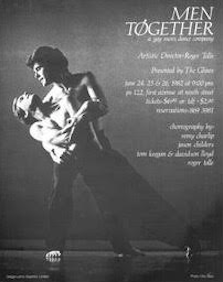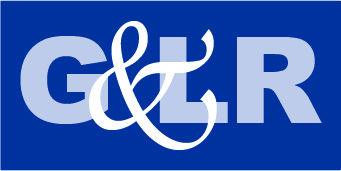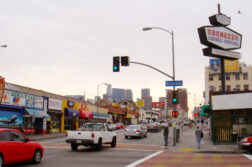I debate with myself, back and forth, for a week, and now I have to choose one photograph to give to the designer. All three elegant black and white photos in front of me are beautiful shots with lovely dramatic lighting, great contrast. Each would reproduce well in either an 11×17 poster format or in a smaller format for mailing. Each of them has sufficient open space within the frame to place the lettering for the all-important identifying information—Men Together a gay men’s dance company, and in smaller type, the who, when, where, etc., for our first performances in 1982.
Each of the images exudes a subtext: subtle messages that will or will not sell more tickets. I had consulted with a couple of my more trusted dancers and my boyfriend Drew, of course. Each shot featured Drew and me in our Intimate Voices: Duet. Each had been taken by a portrait photographer, a professional I had been able to afford only because of his desire to break into dance and performance photography.
 Exhibit A: Drew is leaning his head back on my shoulder, both of us looking up on a diagonal, our hopeful faces in profile. We seem to be gazing at some glowing and wondrous future. The lighting evokes the warmth of a rich and golden sunset, even in this black and white image. Shot from the shoulders up, we see only a little of the pinstriped dress shirts that were our costumes for the first section of the piece. Our faces pop, all smooth skin, high cheekbones and masculine jaw lines. Two young men clearly intimate with each other, easy on the eyes, easy to fall for. The photo says this event will be about romantic relationships between men.
Exhibit A: Drew is leaning his head back on my shoulder, both of us looking up on a diagonal, our hopeful faces in profile. We seem to be gazing at some glowing and wondrous future. The lighting evokes the warmth of a rich and golden sunset, even in this black and white image. Shot from the shoulders up, we see only a little of the pinstriped dress shirts that were our costumes for the first section of the piece. Our faces pop, all smooth skin, high cheekbones and masculine jaw lines. Two young men clearly intimate with each other, easy on the eyes, easy to fall for. The photo says this event will be about romantic relationships between men.
 Exhibit B: This one screams athletic dancing and daring interdependence. Drew’s firmly planted feet stress how strongly he is pressing the floor away in order to counterbalance my weight. His bare torso is turned slightly, back and shoulder muscles bulging to keep me from falling. Our left arms are linked, hands gripping elbows. With our black pants disappearing into the dark background, the central focus of the shot is my bare torso arched backward, hovering over the floor. My fully extended right arm completes the line of our stretched bodies all the way from Drew’s angelic face in the upper right corner down to my hand at the bottom left of the frame. Calm, concentrating attention assures that this will be about acrobatic precision, complete trust, mutual surrender.
Exhibit B: This one screams athletic dancing and daring interdependence. Drew’s firmly planted feet stress how strongly he is pressing the floor away in order to counterbalance my weight. His bare torso is turned slightly, back and shoulder muscles bulging to keep me from falling. Our left arms are linked, hands gripping elbows. With our black pants disappearing into the dark background, the central focus of the shot is my bare torso arched backward, hovering over the floor. My fully extended right arm completes the line of our stretched bodies all the way from Drew’s angelic face in the upper right corner down to my hand at the bottom left of the frame. Calm, concentrating attention assures that this will be about acrobatic precision, complete trust, mutual surrender.
Exhibit C: This one etches across the opposite diagonal from the other two. Does it matter, in terms of unconscious viewer reaction, which diagonal is evoked? Are pictures with clear structural diagonals more likely to sell tickets? Or do I just prefer photographs as well as choreography with strong diagonal lines?
 In this one, I am holding Drew in a classy ballroom dip. Both of us are bare-chested, his back to my front, my face turned down to his as if to steal a kiss. His arms are crossed and my arms interlace with his even as I hold his weight. Am I about to lay him down and have my way with him, or am I going to swirl him up into a swift series of spins? My five splayed toes, doubled by the shiny floor, punctuate the lower corner of the frame. Our black pants make our lower bodies disappear and keep the focus on our dramatically intimate clutch. Sweet, tender, dynamic, masculine, sexy.
In this one, I am holding Drew in a classy ballroom dip. Both of us are bare-chested, his back to my front, my face turned down to his as if to steal a kiss. His arms are crossed and my arms interlace with his even as I hold his weight. Am I about to lay him down and have my way with him, or am I going to swirl him up into a swift series of spins? My five splayed toes, doubled by the shiny floor, punctuate the lower corner of the frame. Our black pants make our lower bodies disappear and keep the focus on our dramatically intimate clutch. Sweet, tender, dynamic, masculine, sexy.
Drumroll please. Which one will be chosen? Which one will be plastered all over derelict buildings and light posts in the gay neighborhoods of Manhattan? Which one will be dropped into selected mailboxes, or picked up by nervous hands in bars and clubs?
And the winner is…
Exhibit C is delivered by hand to the designer. Typefaces are carefully chosen, proofs are corrected, presses roll, the PR process spins out, and the images appear around town. But it is word of mouth that sells out all three nights at Performance Space PS 122. And my little rag-tag company of men is assured of another concert the following year.
 Roger Tolle was a dancer/choreographer in NYC in the 1980s, and since then has been exploring a variety of somatic practices. He is a certified Trager Approach to Movement Therapist, and a Certified Surrogate working in conjunction with sex therapists to help gay, bi and trans men resolve issues of body image, sensuality, intimacy and sexual functioning. His recent article about Surrogate Partner Therapy appeared in the Summer 2019 issue of Creative Nonfiction Magazine, and sections of his ever evolving memoir appear in Skyline 2017 and 2018. For more info, visit: www.RogerTolle.net and www.SurrogatePartnerTherapy.
Roger Tolle was a dancer/choreographer in NYC in the 1980s, and since then has been exploring a variety of somatic practices. He is a certified Trager Approach to Movement Therapist, and a Certified Surrogate working in conjunction with sex therapists to help gay, bi and trans men resolve issues of body image, sensuality, intimacy and sexual functioning. His recent article about Surrogate Partner Therapy appeared in the Summer 2019 issue of Creative Nonfiction Magazine, and sections of his ever evolving memoir appear in Skyline 2017 and 2018. For more info, visit: www.RogerTolle.net and www.SurrogatePartnerTherapy.




